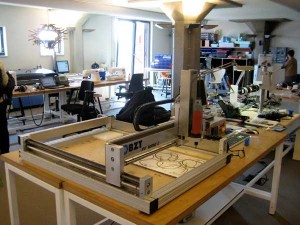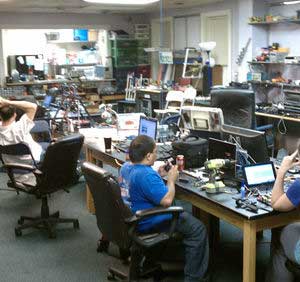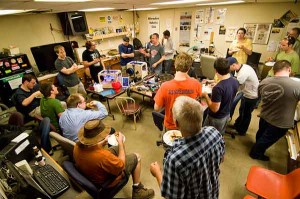Did you know that there are many different types of makerspaces, each with their own set of unique characteristics? This was news to me until recently so I thought I'd pass along my research on what I found were the important distinctions as well as important links.
FabLabs

Amsterdam Fab Lab at The Waag Society
A FabLab is a type of makerspace that was created by the Center for Bits and Atoms headed by Prof. Dr. Neil Gershenfeld at MIT. It began as an outreach project to provide access to modern means for invention such as electronics equipment, laser cutters, routers and milling machines in order to enable makers to create nearly anything. There are currently over 200 FabLabs in over 30 countries around the world.
Learn More:
Hackerspaces

NYC Resistor Hackerspace
Also called a hacklab or hackspace, hackerspaces are places where computer programmers, makers, DIY'ers and artists converge to collaborate and socialize. Hackerspaces have been around since 1995 with the founding of c-base in Berlin which according to Wikipedia is one of the first independent, stand-alone hackerspaces in the world, not affiliated with a school, university, or company. Hackerspaces were originally started by computer hackers however they have since expanded to encompass many other activities such as creating physical objects, conducting instructional workshops, etc. There are currently over 1,800 hackerspaces in over 20 countries around the world.
Learn More:
Makerspaces

Milwaukee Makerspace
Makerspaces are creative, DIY spaces where people can gather to create, invent, and learn. The usually have 3D printers as well as electronic equipment available, some also have metalworking, woodworking, and traditional arts and crafts equipment available. They are used by schools and libraries to provide valuable skills in math and engineering to children and patrons of all ages.
Learn More:
- List of makerspaces
- Make Magazine
- Makerspace Community
- Maker Culture Wikipedia entry
- Makerspaces Meetup Groups
And even more resources are available here: